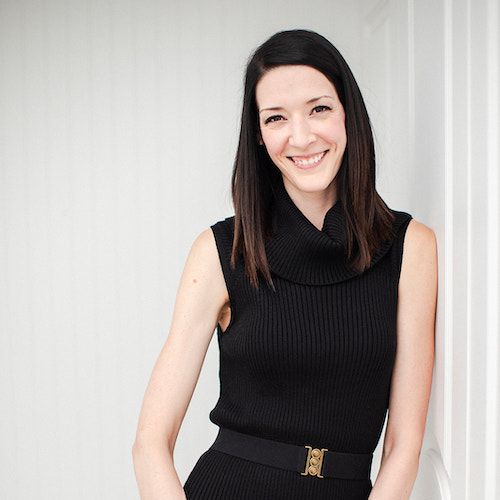Why Does Burnout Happen? You Do It To Yourself
Burnout is the misalignment of expectations, priorities, and boundaries-with some fear-based decision-making added in.

It was past 9 pm and I had had 3 meetings and an after-work networking event. My ears were plugged, my voice scratchy, and I had a dull headache at the base of my skull. My feet and lower back were sore from (admittedly super cute) high heels and I could not wait to crawl into bed.
I woke up the next morning feeling hungover…but I hadn’t had anything to drink. Everything felt tired. I muddled through my morning but wasn’t able to focus long enough to truly get anything done. I didn’t particularly want to do much of anything.
I opened my Google Calendar and winced a little at the rainbow of meetings and commitments I had left in the week…and the following week…and the week after. I looked at the slightly faded rainbow of meetings and commitments I had already worked through this week.
I wasn’t sure I could keep it up. I didn’t want to do any of it, but then I felt guilty because this is what I signed up for…right? This is what it took to be “successful”...right?
I was burned out. And I was wrong.
That was many years ago when I first started doing business development for my software company, Code and Effect.
I was at evening events or dinner 3 or 4 times a week, in addition to the daily lunches and coffee meetings I had during the day (back in the old days when that was a regular thing we did 😅). I volunteered on multiple committees, often ending up on the executive. I was part of multiple networking and mentorship groups and went to all of their socials.
I said yes to almost everything that was asked of me, fearing that if I didn’t say yes I would miss out on an important opportunity. I thought I was doing my level best to be the face of my company and raise our profile in our city.
I would get to the end of each week and be completely, utterly, spent… only to slightly recharge on the weekend and do it all again the next week.
The narrative of the intrepid entrepreneur burning the candle at both ends, working all the time, whatever it took, was loud in my mind.
Sound familiar?

Burnout: You do it to yourself
As I came to better understand my own energy needs as an introvert, and in the wake of my Multiple Sclerosis diagnosis, I realized that the pace I had set was not sustainable and I had to make a change. While I had succeeded in raising our profile and getting our name out, it was at the expense of my health and well-being.
I was burnt out… and in the eternal words of Radiohead, I had done it to myself, and that’s what really hurt.
I was certain that this wasn’t the only way to be an entrepreneur!
What is burnout?
Burnout, as I defined in my guest post for Ask a Business Expert, is physical, mental, and emotional exhaustion caused by chronic, unmanaged stress. It’s when you feel exhausted all the time, dislike your job, have reduced motivation and creativity, and start to feel less capable in your role.
It’s more than being tired. It’s a sustained feeling that doesn’t get much better with a bit of rest. It’s when you have dug yourself into an energy pit and it will take a herculean effort to climb out.
Why does burnout happen?
Much of burnout is the result of a combination of a misalignment of expectations, priorities, and boundaries-with some fear-based decision-making added in.
1. Unrealistic expectations of yourself
We expect a lot from ourselves AND we're bad at estimating how much time a task will take. As a result, we unintentionally overload our schedules with too many tasks... and not enough time to do them!
There is even a term for it, called the “planning fallacy”. The planning fallacy is a phenomenon in which predictions about how much time will be needed to complete a future task display an optimism bias and underestimate the time needed.[1]
In addition to the planning fallacy, we don’t have a realistic grasp on how much time we have left during the day, after our normal routines and commitments.
2. Neglected priorities because there are too many
There is often a difference between what we say are our priorities are versus where we focus our time and attention. The challenge is that there are always more priorities than there is time. You can prove this right now with 5 minutes of reflection on your own supposed priorities. I guarantee there are too many!
Priorities are the foundation of the impossible quest for work-life balance.
In my article, Work-Life Balance is a Myth, Aim for This Instead, I talk about life as a pendulum (instead of a see-saw), with the pendulum swinging between our different priorities. Problems start to happen when the pendulum gets stuck on one priority and the others become neglected. For most, the pendulum is most often stuck on work!
3. Lack of boundaries and unprotected time
Lack of boundaries looks like an out-of-control email inbox that rules your day, a calendar of meetings that looks like a unicorn barfed on it, and interruptions galore. It’s never having the time and space to do deep, focused work so things are scattered and constantly feel out of control.
When you don’t protect your time and set clear boundaries around when and how often you read and write email, take and request meetings, and when you are available…other people decide for you, to everyone’s detriment.
4. Fear-based decision-making
In my article, 7 Strategies to Stop Fear-Based Decision-Making, I define fear-based decision-making as something that happens when you make decisions based on being afraid of a potential outcome.
The 5 fear-based motivators I identified are:
- Fear of missing out on money
- Fear of missing out on a connection
- Fear of not being liked (aka people-pleasing)
- Fear of conflict
- Fear of judgement
These fears mean you give up agency over what you do with your time and put your priorities last (or don’t consider your priorities at all). You do things at your own expense, beyond what is reasonable for your energy and health.

Other contributors to burnout
I realize that there are plenty of things that happen in the world and circumstances in our lives that we have no control over that contribute to burnout. There is an endless list of hardships and I by no means want to discount the part they play in burnout.
This article (and the one next week!) are about changing what we DO have control over while leaving more space to manage the things that are out of our control.
So what now?
Once you have taken responsibility and acknowledged the significant part your choices play in leading you down the path to burnout…you can start to make different choices! You can shift how you manage and think about your expectations, priorities, boundaries, and fear-based decisions.
In next week’s article (it was too long to do it in one!), I will cover some ways to make those shifts so you can learn how to recover from burnout and how to prevent yourself from burning out again in the future.
If this story sounds familiar and you need help climbing out of the hole of burnout you have dug yourself, please reach out to talk about how I can help.
Share
Ashley Janssen

Productivity consultant, writer, speaker, serial entrepreneur, chaos calmer, introvert, cat-lady. Lover of books, fitness, old fashioned’s, basketball, and video games.
Follow me on
Twitter
or
LinkedIn.
Hire me for
1 on 1 productivity consulting
or
speaking.
Related articles

What If Being Lazy Was a Good Thing?

How to Winterize Your Life


Comments ()